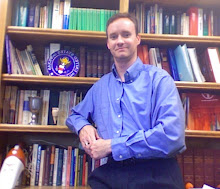After seeing the new (2010) MacBook Airs in the wild, it will be hard not to go that direction when it's time to move to a new MacBook. They are amazing, and the only thing at this point is sacrifices is hard drive space and a slot to stick in that CD/DVD in. As such, it is a game changer regarding what MacBook I'd recommend. I think I used the optical drive in my MacBook about 5 times last year. Given that I'll still have a desktop and a cloud to handle backup and the occasional disk need, the Air becomes such a viable option. For me, really, the processor speed is the main issue, since I occasionally do some intensive work on the machine. However, I have one big concern, and that is the upgradeability of the memory.

I'd buy an 11" Air immediately, except for my concerns about being able to upgrade the SSD hard drive later on. My inclination would be to pony up for just the minimum SSD memory and then upgrade later once SSD prices have gone down. But, Apple has killed the first 3rd party attempt at an upgrade kit, and the future is shaky. If this is the "future of the MacBook," is the future an inability to DIY expand your memory?
Background:
From watching the
teardown pictures of folks getting inside the Air, getting to and removing the Flash Storage Unit is a piece of cake. But when PhotoFast came out with the first 3rd party upgrade kit, the 256GB MacBook Air SSD upgrade kit,
Apple killed it. OWC has now announced the
Mercury Aura Pro Express SSD MacBook Upgrade kit. But worries are that it will be short lived, too. Why is Apple keen on killing the 3rd party upgrades to the MacBook Air? It was a custom, SSD modules soldered onto a a memory board solution that Apple created, but it is a shame that things are shaky in this area, especially given how easy the access is to the memory board.
I am eagerly watching Apple's response, if any, to OWC. If none comes, then there is a good chance that my next MacBook will be of the Airy ilk.





